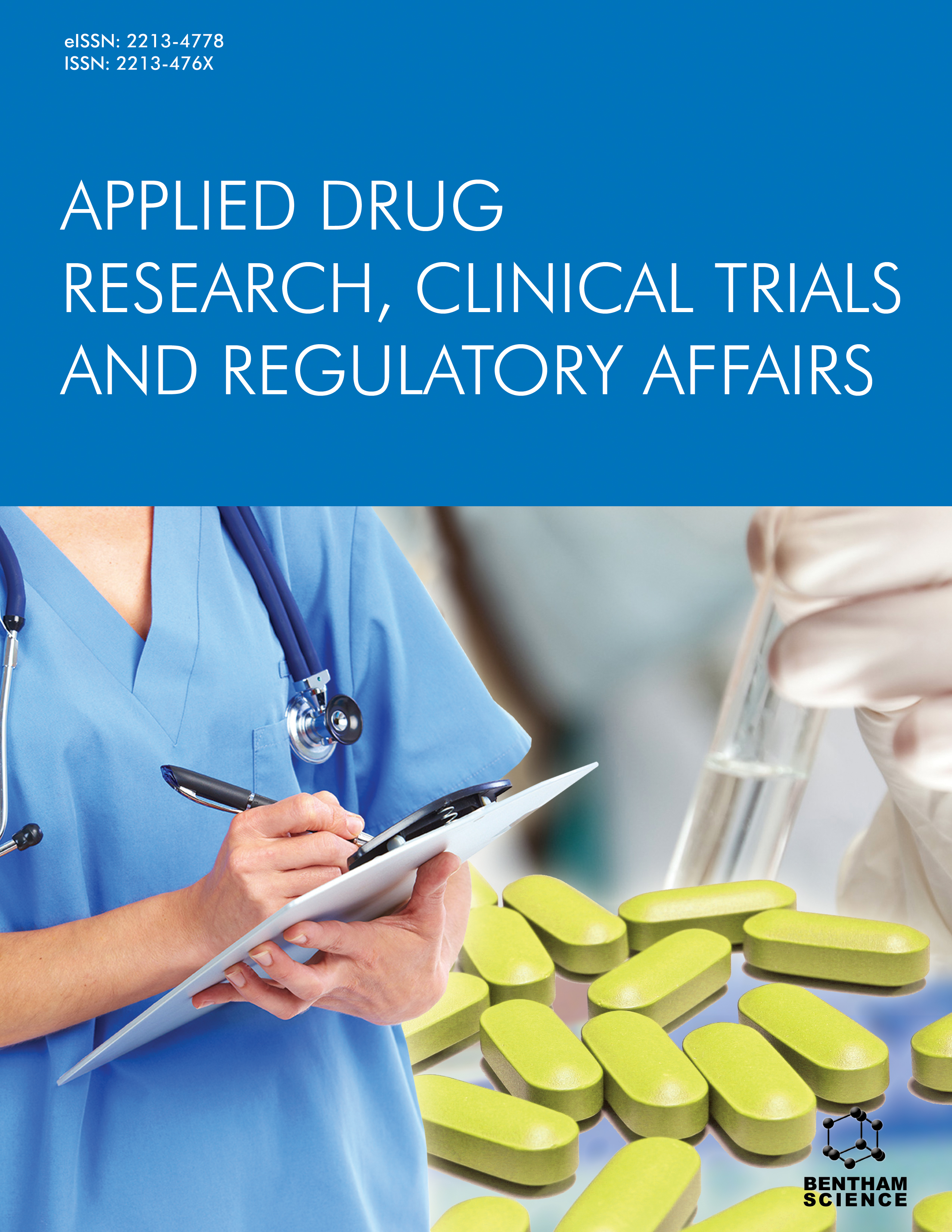Applied Drug Research, Clinical Trials and Regulatory Affairs - Current Issue
Volume 10, Issue 1, 2024
-
-
Pharmaceutical Market Access in Latin America: Analyzing Approval Requirements in Three Key Nations: Ecuador, Dominican Republic and Nicaragua
More LessAuthors: Jhanvi Thakkar, Ayush Patel, Jagruti Desai, Mehul Patel, Umang Shah, Ashish Patel, Krishi Patel and Swayamprakash PatelThis article presents a comprehensive and comparative analysis of the regulatory frameworks governing the approval of pharmaceuticals in the Dominican Republic, Ecuador, and Nicaragua. It delves into the intricate scientific terminology and complex procedures inherent in these regulatory systems, shedding light on the demanding requirements that pharmaceutical companies must fulfil to secure market access in these co Read More
-
-
-
Qualitative Analysis and Anti-oxidant Potential of Ethanolic Extract of Manilkara zapota (L.) P. Royen Leaves
More LessAuthors: Priyanka Sharma, Aakash Deep, Harish Kumar, Devendar Chaudhary, Neha Thakur and Shubham BatraBackgroundThe normal metabolic functioning of aerobic cells is related to free radical formation. The oxygen utilized in the cell growth gives rise to a number of oxygen free radicals. Further, these oxygen free radicals interact with lipidic molecules to produce hydroxyperoxides and various other peroxides also, radicals like superoxide, hydroxyls, and lipoid peroxides, which lead to cytotoxicity due to their interaction with biological Read More
-
-
-
Regulation of Nanomaterials and Nanomedicines for Clinical Application
More LessAuthors: Razi Ahmed, Vikash Maurya, Anurag Dwivedi and Manoj Kumar MishraTreatment of complicated fatal diseases was difficult when nanotechnology was not more popular. The incorporation of nanomedicine has increased in the last 13 years, even though regulatory guidelines regarding nanomaterials and nanomedicine weren't sufficient. Hence, it was tough to decide valid inevitability for the manufacturers, administrators, health professionals, primary care providers, and rest of the public th Read More
-
-
-
Financial Dynamics in Cell and Gene Therapy Development: Navigating Valuation and Fundraising Challenges
More LessAuthors: Joab Williamson, Alexander Spicer and Pierre-Albert ColcombCell and gene therapy, offering unprecedented solutions for complex diseases, have attracted significant attention in both the scientific and financial communities. This article explores the tumultuous financial journey of companies specializing in these advanced therapeutic modalities. The discussion illuminates the volatility of share prices, challenges in valuation, and complexities in fundraising while delving into the inh Read More
-
-
-
Steering through Regulatory Currents: The Journey of India’s Pharma Industry with the USFDA
More LessAuthors: Raj Kamal, Diksha, Priyanka Paul and Ankit AwasthiIntroduction and ObjectiveIndia's pharmaceutical industry faces challenges in meeting USFDA quality standards, impacting exports and reputation. This review examines the causes of non-compliance and proposes strategies to enhance compliance, predicting future trends.MethodsThis study conducts an analysis of USFDA warning letters to Indian manufacturers, an assessment of non-compliance issues, and an exploration of Read More
-
Volumes & issues
Most Read This Month Most Read RSS feed
Article
content/journals/adctra
Journal
10
5
false
en


